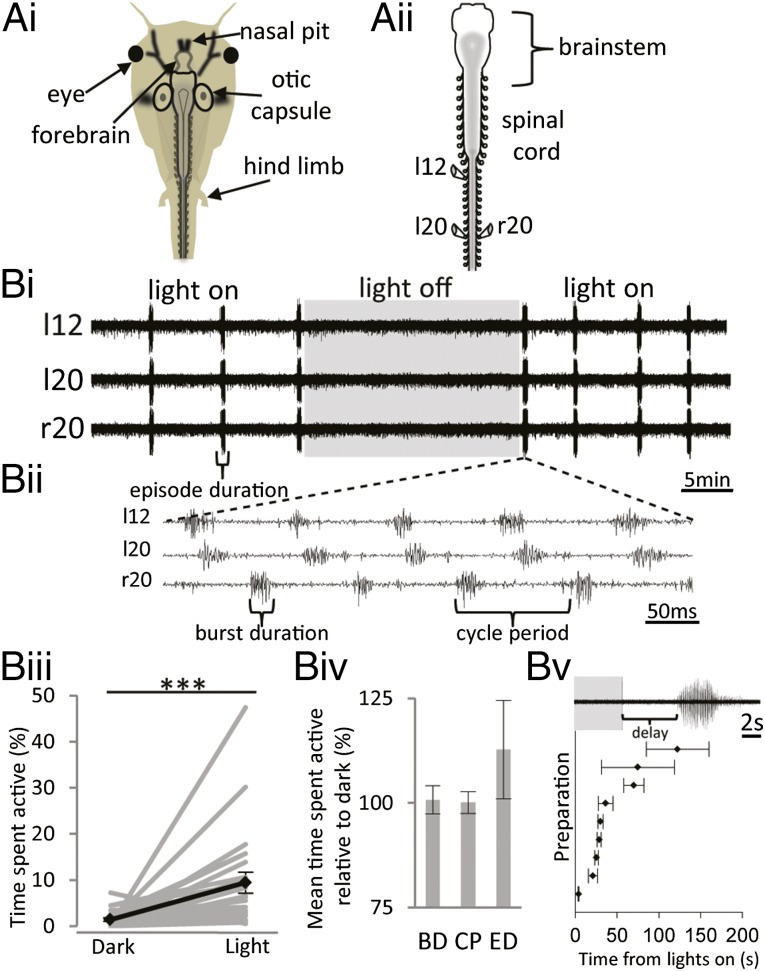Fig. 1.
Fictive locomotion in prometamorphic X. laevis larvae is sensitive to light. (A, i) Cartoon of stage 56 larva showing the approximate location of the central nervous system. (A, ii) Schematic depicting preparation with glass suction electrodes on ventral motor roots. (B, i) Extracellular record from three ventral motor roots showing spontaneous episodes of fictive locomotion. (B, ii) Expanded time base to show coordination of spontaneous rhythm and various parameters, including burst duration (BD), cycle period (CP), and episode duration (ED). Spontaneous activity is sensitive to ambient light levels. In the light, episodes of activity occur regularly every few minutes, whereas in the dark (gray box) the preparation falls silent. (B, iii) Graph of time spent active in light and dark, expressed as a percentage of total recording period, for 23 larval preparations (light-gray lines). The population mean is shown in black. (B, iv) Other parameters of fictive motor activity are unaffected; BD (n = 18), CP (n = 16), and ED (n = 23) are expressed as mean percentage in light relative to dark. (B, v) Graph of mean latency to motor activity from nine different preparations where at least three transitions between dark and light were recorded. In each example, the latency to activity was measured following 10 min in the dark. (Upper) Example response from a stage 54 larva following 10 min in the dark (gray box). Error bars represent ±SEM; ***P < 0.01.

